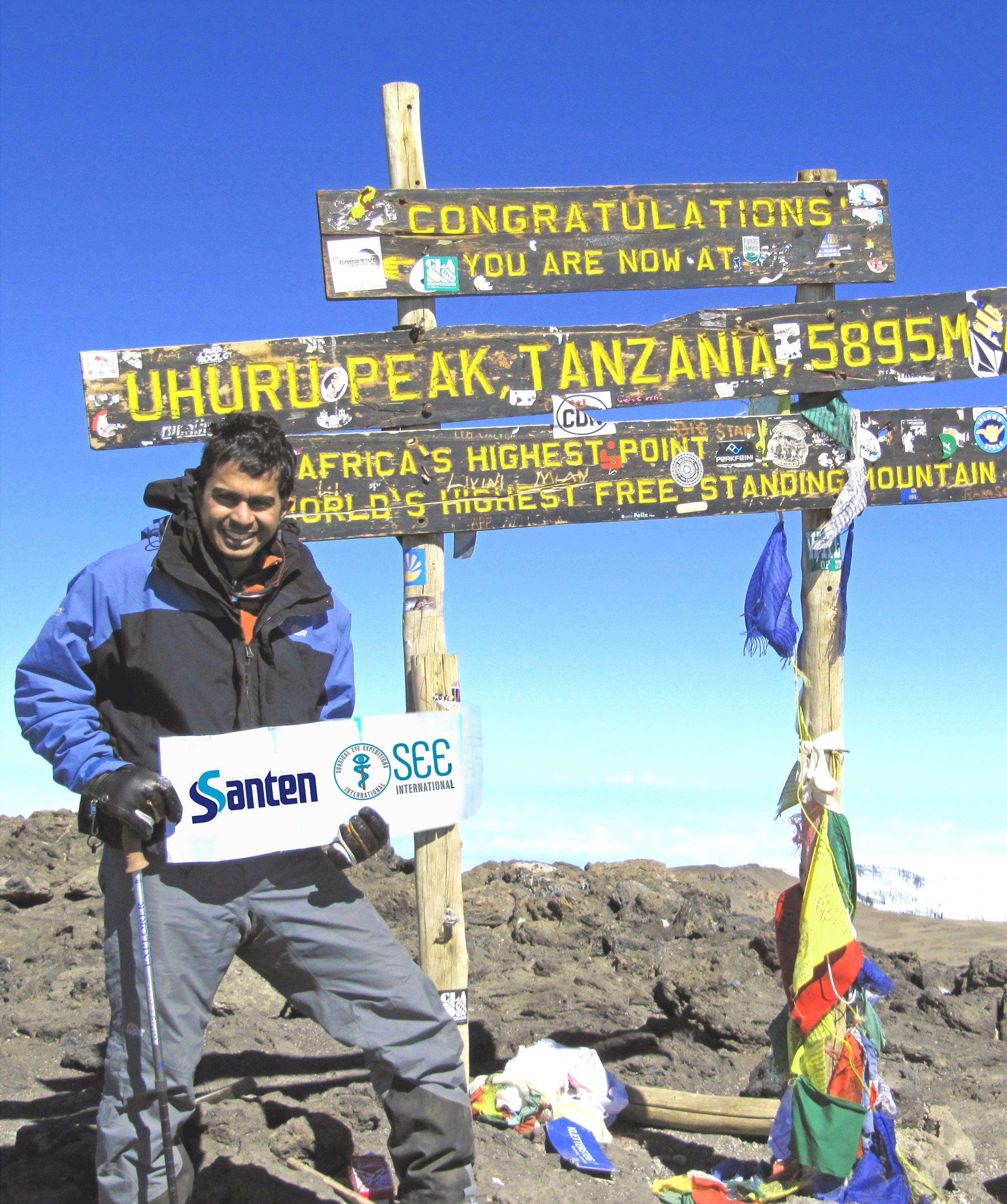Climbing Mountains to Raise Funds
An Adventure Story

Local mountaineer’s audacious quest to combat preventable blindness.
Andy Doraiswamy is an unassuming man with a noble cause and a big heart. When I went to meet him after hearing about Summit for Cure – his plan to summit the highest peak on each continent to raise funds and awareness to combat preventable blindness – I naturally expected at least a touch of swagger.
But the guy I met was exceedingly humble, friendly, and gentle. It quickly became clear to me that Andy is not concerned with fame or glory — he just wants to use his unique position and skills to help SEE International restore sight and transform as many lives as possible.
In his professional role as director of research and development at Advanced Vision Sciences, Andy has worked with his company and its parent company, Santen Pharmaceuticals Ltd., to donate more than a thousand state-of-the-art intraocular lenses to SEE International since 2012. That alone is impressive, but his adventures with Summit for Cure are truly inspiring.
Andy created Summit for Cure in 2010 with the idea of raising as many dollars as each mountain’s height (in meters). Andy says 100% of funds raised go directly to SEE International “and I pay my own trek and travel costs.” In the months leading up to January 2013, he raised $7,050 for SEE before attempting to summit Aconcagua (Ah-cone-caw-gwah), in Argentina, which at 6,962 meters (22,841 feet) is the highest mountain in the world outside of South Asia’s Himalayan range.
Andy knew that Aconcagua would be his most daunting challenge yet, even though he has climbed Rathong Peak in Nepal (21,909 feet), Mont Blanc in France (15,781 feet), Mt. Kilimanjaro in Tanzania (19,340 feet), Mt. Whitney in California (14,505 feet), and Mt. Kinabalu in Malaysia (13,435 feet). Aconcagua is one of the most difficult and dangerous mountains on earth — about nine people die each year trying to conquer this mountain, and only one of every four people who attempt the climb reach the summit. The word Aconcagua literally means “The Stone Sentinel.”
The expedition lasted two weeks, but it all came down to the final day of climbing. On this climactic “summit day,” Andy was at an elevation of 21,325 feet when his climbing partners started noticing early signs of the onset of pulmonary edema, an elevation-triggered condition that can kill if one does not descend a few thousand feet as quickly as possible. He had to make a decision: continue upward and risk his life, or turn back with only 1,500 feet left and let go of a dream for which he had trained so arduously.
Decisions at high altitude are not always rational. Pain is glaring, emotions run wild, oxygen is scarce, energy is drained, doubts are intensified, and thoughts are blurred.
“I barely remember anything from that day,” Andy said, “just snippets here and there, because my body and brain were running on fumes. The weather and mountain conditions were downright brutal. The temperature was minus-20 degrees Fahrenheit and the winds were kicking up at 80 to 90 miles per hour.”
In the end, Andy’s calm and sensible acceptance of his climbing partners’ diagnosis probably saved his life — he decided to turn back. If he had tried to conquer Aconcagua and reach the summit as a matter of personal pride, he may have died on the mountain from advanced pulmonary edema, which causes respiratory failure, hypoxia, and/or cardiac arrest. “It was one of the most physically and mentally demanding days of my life, but it pales in comparison to the daily fight against preventable blindness.”
Michael McGuirk is the advancement associate for Surgical Eye Expeditions (SEE) International, a nonprofit, humanitarian organization that provides medical, surgical, and educational services by volunteer ophthalmic surgeons with the primary objective of restoring sight to disadvantaged blind individuals worldwide.



